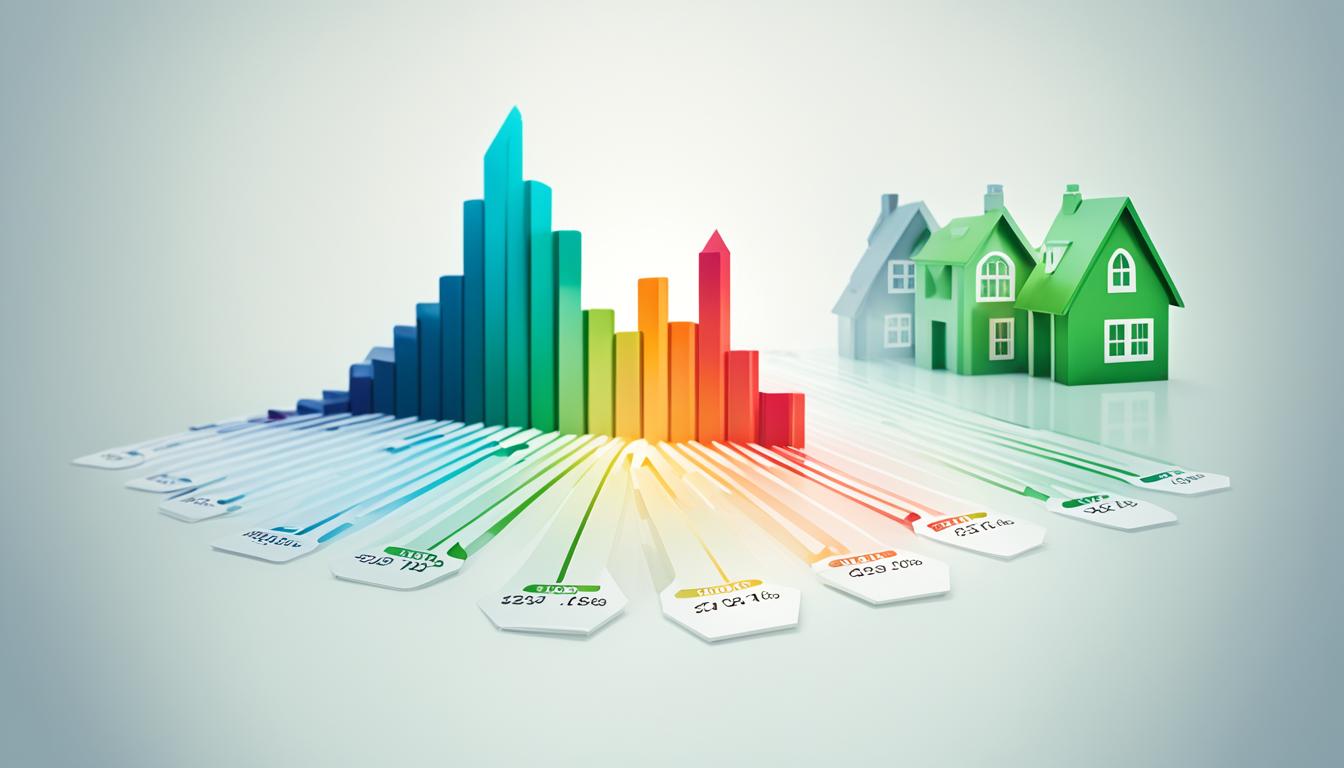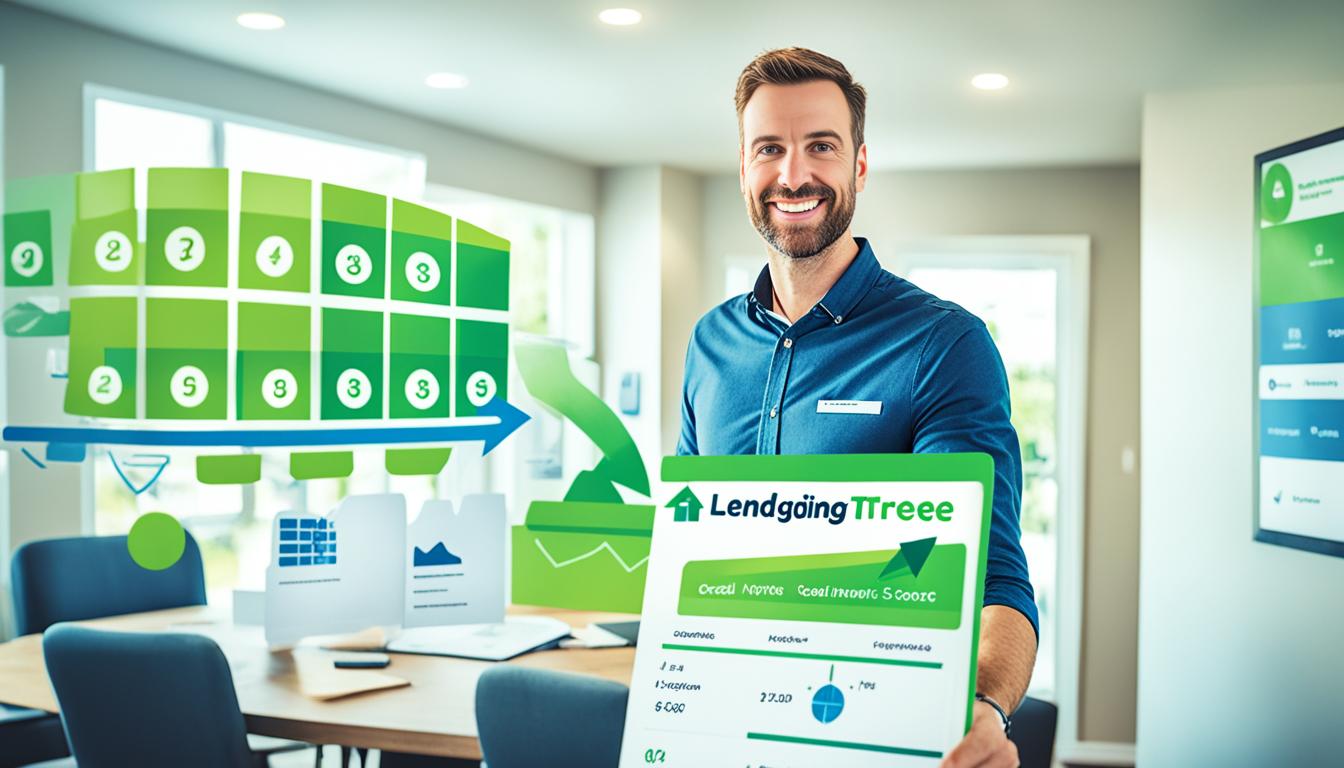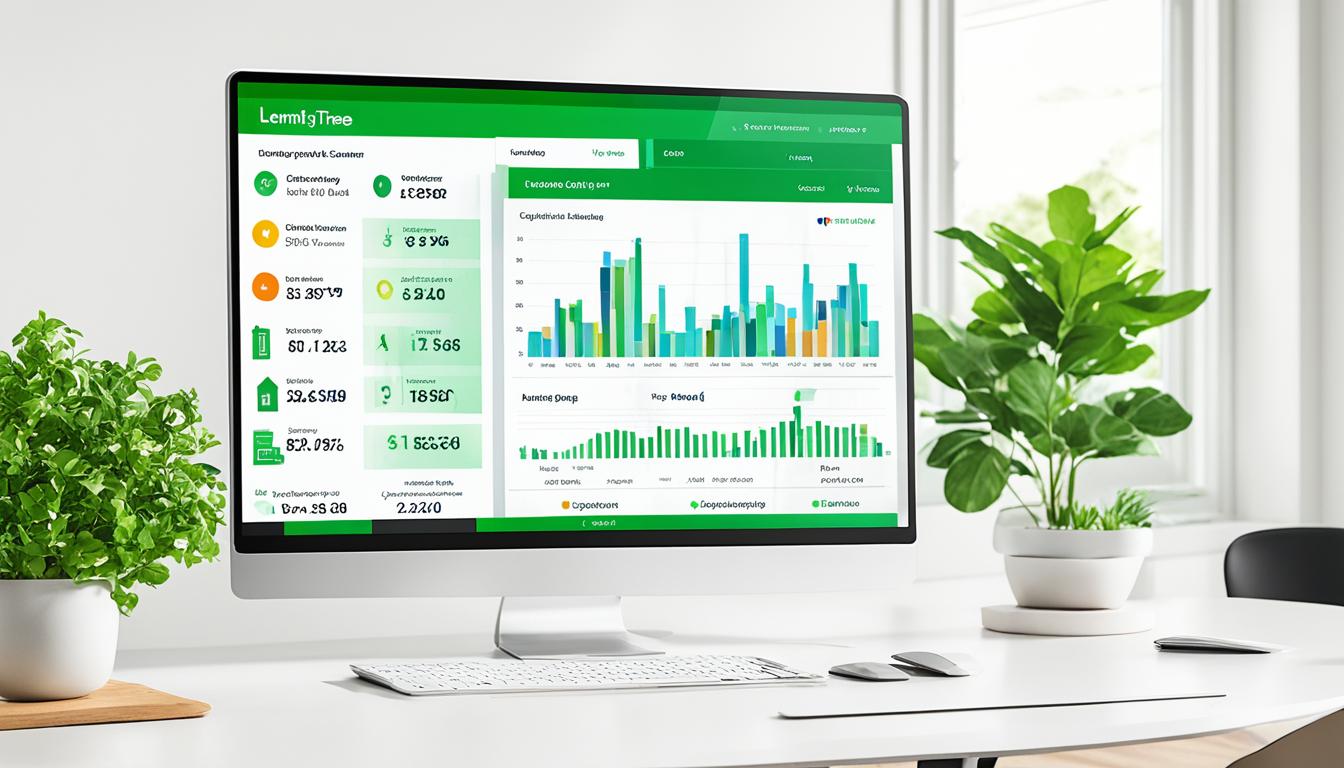Utilize LendingTree Mortgage Calculator for Informed Decisions on your next home purchase
A mortgage is like a contract between you and the lender. It lets you borrow money to buy a home. Knowing how mortgages work and the loan types out there is important. LendingTree’s mortgage calculator is a great tool. It helps you figure out your monthly payments and check out different loan options. This way, you can decide wisely on your next home buy.
Key Takeaways:
- Understanding how mortgages work is crucial before making any home purchase decision.
- LendingTree’s mortgage calculator can help estimate monthly mortgage payments.
- Exploring different financing options is important to find the best mortgage rate and terms.
- Making informed decisions can save you money and ensure a successful homebuying experience.
- Utilize LendingTree’s resources to make confident choices throughout the homebuying journey.
How Does a Mortgage Work?
A mortgage is like a loan for buying a home. You pay monthly, including the principal and interest. The principal is the money you pay off each month, and the interest is what you pay the lender to borrow money.
At first, more of your payment goes to interest. But as time goes by, you pay off more of the loan. This means more of your monthly payment will go towards the principal.
There are different kinds of mortgages. One type is a fixed-rate mortgage. With this, your payment stays the same across the life of the loan. The interest rate doesn’t change either. It’s a favorite for those who like to keep a steady budget and avoid payment surprises.
Then, there’s the adjustable-rate mortgage (ARM). For an ARM, your interest rate is fixed for 5, 7, or 10 years. After that, it can go up or down yearly, based on the market. At the start, you might have lower payments, but these could possibly increase later. ARMs can be good if you expect your finances to get better or if you plan to sell before the rates change.
If you’re looking to lower your mortgage interest rates, mortgage refinancing might be worth considering. This process involves getting a new loan to replace the old one, hopefully with better conditions. You could end up with a lower rate, a shorter loan, or even some cash back. Refinancing can cut your monthly payments, lower your interest, or fund home updates or other goals.
Types of Mortgages:
- Fixed-rate mortgage
- Adjustable-rate mortgage
Current Mortgage Interest Rates
Thinking about buying a home or refinancing means keeping an eye on mortgage rates. These rates change often and are influenced by many things.
At last check, the average 30-year fixed mortgage purchase rate was 7.52%. For refinancing, it averaged 7.76%. But remember, these numbers can change based on the type of loan you get.
Experts say rates will likely stay high for a while. Still, they might drop to around 6% if the Federal Reserve steps in.
Knowing these rates can help you choose the best mortgage for your situation. It’s a key part of planning your financial future.

Mortgage Requirements and Qualifications
Applying for a mortgage means meeting various lender requirements. Your eligibility for a loan depends on these. They influence things like your mortgage rate and monthly payment.
Credit Score
Lenders check your credit score closely. A high score suggests you’re good with money. It usually gets you a lower mortgage interest rate. Work on your credit by paying bills on time and checking your report for mistakes.
Down Payment
Putting money down upfront is crucial. It lowers your loan amount and might get you a better interest rate. Plus, a big down payment can mean you needn’t buy mortgage insurance. Saving for this shows commitment to buying a home.
Loan Term
How quickly you’ll pay off the loan is its term. It can be 15 or 30 years. A longer term lowers your monthly pay but ups the interest cost. Shorter terms mean higher monthly payments but less interest overall. Pick what fits your budget and goals.
Monthly Debt
Lenders check your monthly bills against your income. This gives them your debt-to-income ratio. Lowering your debts before applying can make you look better. It boosts your chance of getting the loan you want.
Shopping for a Mortgage
Don’t settle for the first mortgage you find. Look around to see what’s out there. Check different lenders and their rates. Use online tools to compare and get the best deal for you.

To better your chances of getting a loan, work on your finances. This means boosting your credit, saving for a down payment, and cutting your debts. Understanding what lenders look for and shopping wisely can make your dream home more reachable.
Steps to Getting a Mortgage
Getting a mortgage follows several key steps. Knowing and preparing for these steps will help you get the right mortgage. Let’s go through each step together to help you reach your goal of owning a home.
- Checking Finances: Start by checking your credit report and looking at your finances. This shows what you can afford to borrow and pay each month. Using a home affordability calculator can help you see your budget and find the right mortgage.
- Choosing the Right Mortgage: With your financial picture clear, pick the best mortgage for you. Think about the loan’s term, interest rate, and how you’ll pay it back. This makes sure the mortgage fits your needs well.
- Down Payment and Savings: Having money for a down payment is important. More money down can mean getting lower interest rates and a smaller loan. Save up and consider help with your down payment if you need it.
- Shopping for a Mortgage: It’s key to look at different mortgage offers before choosing. This lets you find the best rates and terms. Be sure to get preapproved and learn about each lender’s loans.
- Making an Offer: When you’ve found your perfect home, you can offer to buy it. Your real estate agent can help you make a fair offer. Having a preapproval helps show the seller you’re serious.
- Home Inspection: Once your offer is accepted, have the home inspected. This checks the home’s condition and finds any problems. It’s important for making sure you’re making a good buy.
- Working with the Underwriter: An underwriter will look over your documents during the mortgage process. Make sure to supply any needed documents quickly. This helps keep your approval on track.
- Final Walk-through and Closing: Before your mortgage closes, do a final check of the home. Make sure everything is how it’s supposed to be. Then, sign the papers at the closing meeting to officially be a homeowner.
Attaining Your Homeownership Goals
Following these steps will help you with your mortgage. Stay on top of your finances, pick the right mortgage, save for your down payment, compare mortgage rates, get preapproved, make an offer, inspect the home, work with the underwriter, and do a final check before closing. Each step is important for a smooth journey to owning a home.

The Average Down Payment on a House
Buying a house involves thinking about the down payment. For first-time homebuyers, the average is 6% to 7% of the home’s price. But for repeat buyers, it jumps to about 17%.
Homes in some places cost more, which means a bigger down payment. Your down payment changes with local house values.
A 20% down payment helps avoid paying private mortgage insurance (PMI). Yet, there are ways to buy a home with less money down. Some loan programs need a smaller down payment. This makes home buying easier for some people.
Don’t forget about assistance programs for down payments. They help first-time buyers and those tight on money. These programs can cover part or all of the down payment and some closing costs. Looking into these options is a smart move for many.

Knowing about down payments is crucial for anyone looking to buy a home. It’s good to understand the usual amounts for down payments. And, don’t overlook the help you might get from certain programs.
Why Lenders Use LendingTree
Lenders use LendingTree to connect with potential borrowers. It’s a top online lending marketplace. Through LendingTree, lenders reach a broad audience looking for home loans.
The loan explorer tool is a big hit with lenders. It lets borrowers compare loan rates easily. This makes it simple for borrowers and lets lenders highlight their best deals.
LendingTree also offers a contact center for lead qualification. This feature helps lenders identify and reach out to quality leads fast. It helps them use their time and resources better.
“LendingTree’s platform has been instrumental in expanding our reach and generating valuable leads. The loan explorer and contact center have significantly streamlined our lead qualification process, resulting in higher conversion rates.” – John Smith, Mortgage Lender
LendingTree boosts lender visibility by introducing them to borrowers locally. This local connection builds strong relationships. It improves the chance of loans being successful.
Leads from LendingTree aren’t limited to one lender but are cost-effective. This makes LendingTree a great tool for lead generation due to its wide reach.
LendingTree also supports lenders with training and account managers. They help lenders keep up with trends and use the platform effectively for success.
Overall, LendingTree is key for success in today’s competitive lending market. It gives lenders the tools they need to do well.

Benefits of LendingTree for Mortgage Lenders
- Access to a wide audience of individuals actively seeking home loan options
- Loan explorer tool for borrowers to compare rates and loan offers
- Contact center for efficient lead qualification
- Local introductions to connect lenders with potential borrowers in their area
- Affordable leads compared to traditional advertising opportunities
- Training programs and account managers for ongoing support
Conclusion
The LendingTree mortgage calculator gives you key details for smart home buying. It explains mortgages, rates, and how to qualify. This helps you feel more secure when buying a home.
LendingTree has many resources to help you. You can figure out your monthly payments, check different rates, and look at finance choices. With LendingTree’s help, you can buy a home wisely.




